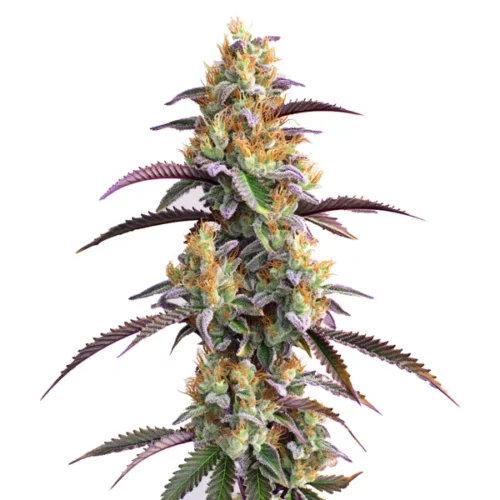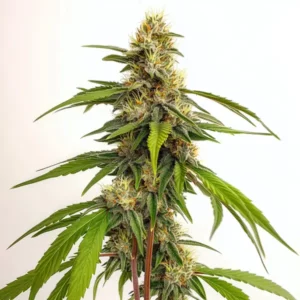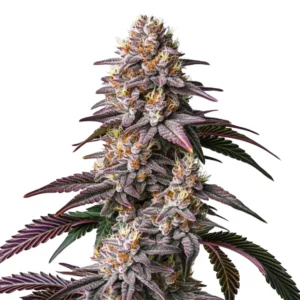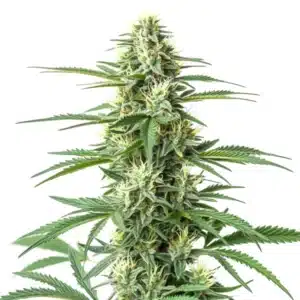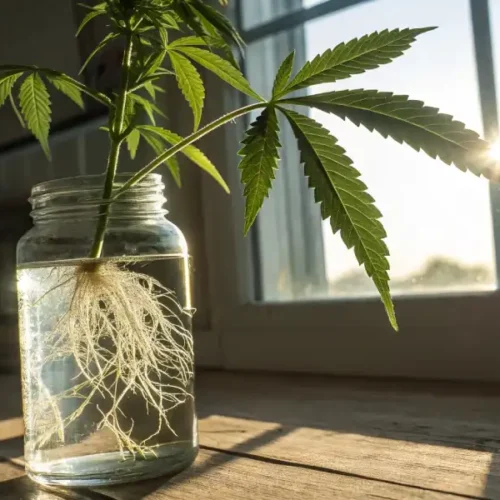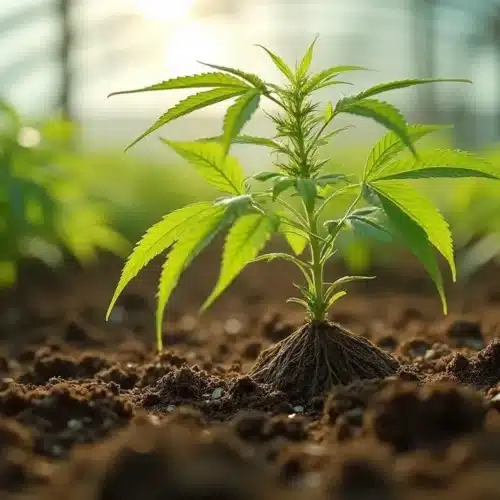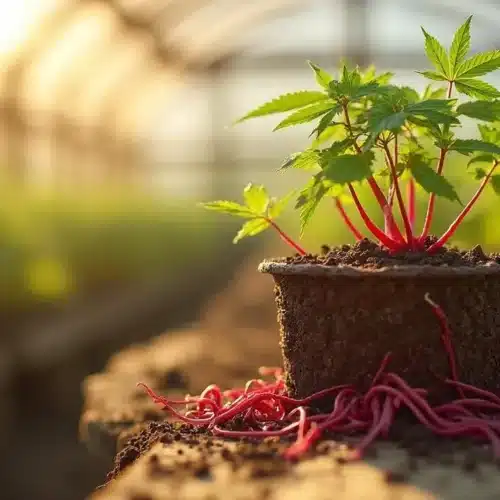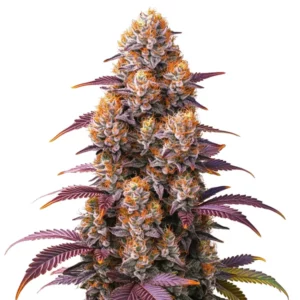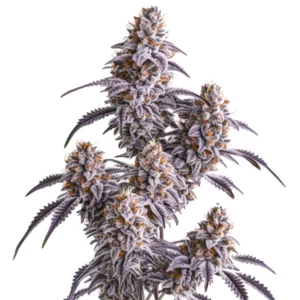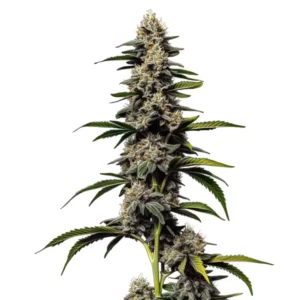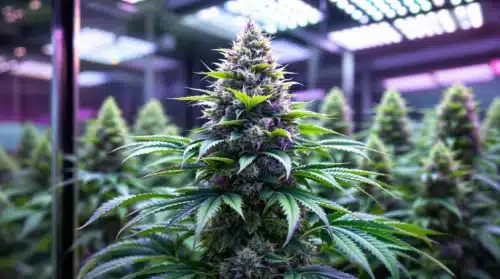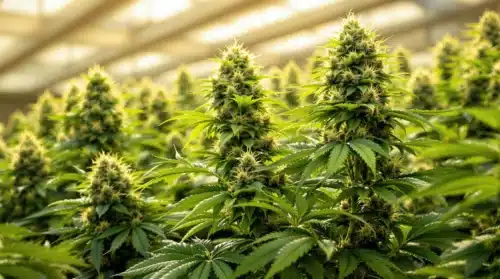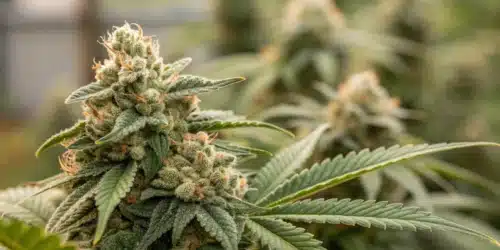Gator Breath Strain Cannabis Seed Description
Gator Breath Strain is an exceptional cannabis variety known for its distinctive aroma, flavor, and effects. This strain is a result of careful breeding, combining the genetics of two renowned parent strains, and shares some lineage traits with the grape gator strain. It typically boasts dense, resinous buds with a rich color palette, ranging from deep green to shades of purple.
What sets Gator Breath apart is its complex fragrance, which mingles earthy and woody notes with hints of citrus and spice. This blend creates a truly unique olfactory experience that sets it apart from other strains.
Recommended Strains
Gator Breath
 THC: 30% - 33%
THC: 30% - 33% Type of seed: Feminized
Type of seed: Feminized Phenotype: Mostly Indica
Phenotype: Mostly Indica Day to flower: 8 - 10 weeks
Day to flower: 8 - 10 weeks
Jungle Breath
 THC: 24% - 28%
THC: 24% - 28% Type of seed: Feminized
Type of seed: Feminized Phenotype: Mostly Indica
Phenotype: Mostly Indica Day to flower: 8 - 10 weeks
Day to flower: 8 - 10 weeks
Environmental Requirements for Growing Marijuana Gator Breath
Creating the perfect environment for your Gator Breath plants is crucial for their successful growth. The specific needs of this strain will help you provide the optimal conditions for cultivation.
Gator Breath Strain thrives in a temperate climate, with daytime temperatures around 70-80°F (21-27°C) and slightly cooler nights. Maintaining stable temperature and humidity levels within the grow space is essential to prevent stress and potential issues like mold.
For indoor cultivation, invest in high-quality LED grow lights or HPS lamps to ensure optimal photosynthesis and robust bud development. During the vegetative phase, provide 18-20 hours of light per day, and then switch to a 12-hour light cycle to induce flowering.
For outdoor growing, choose a location with plenty of sunlight and a favorable climate. Gator Breath Strain thrives in a sunny and warm environment, allowing it to reach its full potential. In cooler climates, consider using a greenhouse or providing additional protection to extend the growing season.
Promos & Deals
Setting Up The Growing Cannabis Space
Before you embark on growing Gator Breath, it’s crucial to establish an efficient and well-organized growing space. Whether indoors or outdoors, consider the following factors:
Indoor Cannabis Cultivation
For indoor growers, selecting an appropriate grow tent or dedicated grow room is essential. Ensure the space offers enough vertical room for the plants to grow and has proper ventilation for fresh airflow. Install an effective exhaust system with a carbon filter to control odors and prevent heat or humidity build-up. Reflective materials or Mylar sheets can maximize light distribution and prevent light leaks that could disrupt the flowering phase.
Choose a suitable growing medium for Gator Breath Strain, such as high-quality soil or a hydroponic system, based on your preferences and experience. Ensure proper drainage to prevent waterlogging and maintain a balanced pH level of around 6.0-6.5 for optimal nutrient absorption.
Outdoor Cannabis Cultivation
When growing Gator Breath outdoors, select a location with ample sunlight and suitable soil conditions. Ensure the soil is well-draining and rich in organic matter. Consider using large containers or fabric pots for better control over soil quality and root health. Additionally, protect your plants from strong winds by placing them near a fence or using windbreaks.
Utilizing stakes or trellises to support the branches of your Gator Breath Strain plants is recommended. This helps prevent the branches from bending or breaking under the weight of the dense buds and promotes better airflow.
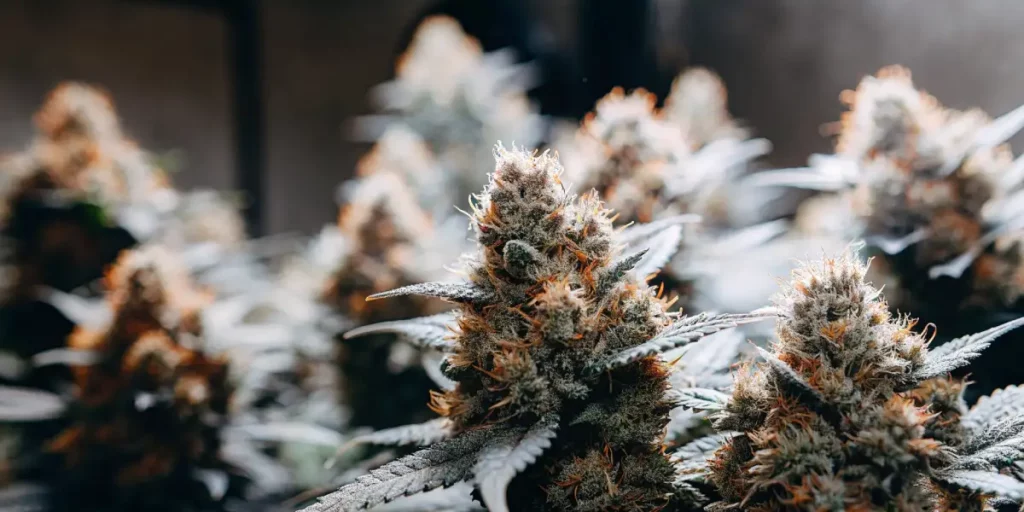
Propagation and Germination of Marijuana Seeds Gator Breath
Successful germination and propagation are crucial for healthy and vigorous Gator Breath Strain plants. Follow these steps to ensure a high germination rate and successful propagation:
1. Start by selecting high-quality Gator Breath feminized seeds from a reputable seed bank. This ensures genetic stability and the feminization of your plants.
2. Begin the germination process by soaking the seeds in distilled water or a damp paper towel for 24-48 hours. Maintain a temperature between 70-85°F (21-29°C) and provide a dark and undisturbed environment.
3. After the seeds have soaked and developed taproots, transfer them carefully to a pre-moistened growing medium, such as a seedling tray or small pots filled with a light and well-draining soil mix.
4. Place the seeds in a warm and humid environment with gentle airflow. Maintain a temperature around 75-80°F (24-27°C) and a humidity level of 60-70% for optimal germination.
5. Provide indirect light to the seedlings during the first few days, gradually increasing the light intensity as they develop. Avoid exposing them to intense light or heat that could cause stress or damage.
6. Once the seedlings have developed a few sets of true leaves, they are ready to be transplanted into larger pots or the final growing containers.
By following these germination and propagation steps, you can ensure a successful start for your Gator Breath plants and establish a strong foundation for healthy growth and abundant yields.
Vegetative Phase of Cannabis seeds Gator Breath Strain
The vegetative phase is a critical stage in the development of your Gator Breath Strain plants. Here are some key considerations during this phase:
Lighting: Provide your Gator Breath Strain plants with 18-20 hours of light per day to promote vigorous vegetative growth. High-quality LED grow lights or HPS lamps are recommended to ensure sufficient light intensity and spectral distribution.
Nutrition: During the vegetative phase, your Gator Breath Strain plants require a balanced and nutrient-rich diet. Use a reputable cannabis fertilizer with a higher nitrogen (N) content to encourage healthy leaf and stem growth. Follow the manufacturer’s instructions and monitor the plants for any signs of nutrient deficiencies or excesses.
Watering: Water your plants when the top inch of the soil feels dry. Avoid overwatering, as it can lead to root rot and other moisture-related issues. Allow the soil to dry out slightly between watering sessions, but ensure the plants do not experience extreme drought.
Training: Consider employing training techniques such as low-stress training (LST) or topping to control the height and shape of your Gator Breath Strain plants. These methods help create an even canopy, increase light penetration, and promote better bud development.
Pruning: Remove any lower branches or leaves that receive little light or show signs of disease or pests. This helps improve airflow and reduces the risk of mold or mildew formation.
By providing your Gator Breath Strain plants with the right environmental conditions, nutrition, and care during the vegetative phase, you can establish healthy and robust plants ready for the flowering stage.
Flowering Phase of Marijuana Seeds Gator Breath Strain
The flowering phase is the most anticipated stage of growing Gator Breath Strain, as it is when the plants develop their characteristic buds. Here’s what you need to know:
Lighting: Adjust the light cycle to 12 hours of light and 12 hours of uninterrupted darkness to initiate the flowering phase. Use a timer to maintain a consistent light schedule. During this stage, your Gator Breath Strain plants require intense light, so ensure your grow lights provide adequate coverage and maintain the appropriate distance from the canopy.
Nutrition: Transition from a nutrient formula higher in nitrogen to a bloom or flowering-specific nutrient formula. These formulations are generally higher in phosphorus (P) and potassium (K), which promote bud development and overall flowering performance. Monitor the plants closely and adjust nutrient levels as needed to avoid deficiencies or toxicities.
Temperature and Humidity: Maintain a slightly lower temperature during the flowering phase, ideally around 65-75°F (18-24°C), to encourage resin production and prevent heat-related stress. As for humidity, aim for levels around 40-50% to minimize the risk of mold or bud rot.
Support: As your Gator Breath Strain plants enter the flowering phase, the weight of the developing buds may cause branches to bend or break. Provide adequate support using stakes or trellises to ensure the plants can bear the weight and avoid bud damage.
Flowering Time: This Strain typically has a flowering time of 8-10 weeks, but this can vary depending on the specific phenotype and environmental conditions. Monitor the trichome development using a magnifying tool to determine the optimal harvest window.
Throughout the flowering phase, maintain a vigilant eye for any signs of pests or diseases. Implement proper pest management practices and take immediate action at the first sight of infestation or abnormalities.
Cannabis Fertilization and Nutrition – Gator Breath Strain
Proper nutrition and fertilization are crucial for maximizing the growth, yield, and overall health of your Gator Breath Strain plants. Consider the following tips:
Choosing the Right Fertilizer: Select a high-quality cannabis-specific fertilizer or nutrient line that provides a balanced blend of macro and micronutrients. Look for products rich in nitrogen (N), phosphorus (P), and potassium (K) to support healthy growth, root development, and bud formation.
Feeding Schedule: Follow the manufacturer’s instructions and adjust the feeding schedule based on your plants’ specific needs. Start with a lower concentration and gradually increase it as the plants progress through their growth stages. Monitor the plants closely for any signs of nutrient deficiencies or excesses, and make adjustments accordingly.
Supplements and Additives: Consider incorporating supplements and additives into your feeding regimen to enhance specific aspects of plant development. These may include bloom boosters, beneficial microbes, enzymes, or organic amendments that improve soil structure and nutrient availability.
Regularly monitor your plants’ response to the feeding program, adjusting nutrient concentrations and frequencies as needed. Remember to flush the plants with pure water during the final weeks of the flowering phase to remove any excess salts or nutrients, which can affect the flavor and overall quality of the final harvest.
Pest And Disease Control for Cannabis Growing – Gator Breath Strain
While Gator Breath Strain is known for its resilience, it is still susceptible to pests and diseases. Implementing proper pest and disease control measures is crucial to protect your plants and ensure a successful cultivation. Here are some preventive and corrective actions:
Prevention:
- Regularly inspect your plants for any signs of pests, such as spider mites, aphids, or thrips. Early detection is key to preventing a full-blown infestation.
- Maintain a clean and tidy growing space, removing any dead plant material or debris that could harbor pests or pathogens.
- Introduce beneficial insects, such as ladybugs or predatory mites, to your garden to help control pests naturally.
- Ensure proper airflow and ventilation in the growing space to reduce the risk of mold or mildew formation.
- Quarantine new plants or clones before introducing them into your growing area to prevent the spread of pests or diseases.
Corrective Actions:
If you identify a pest or disease issue, take swift action to address it. Here are some specific steps you can take:
If you identify a pest or disease issue, take swift action to address it. Here are some specific steps you can take:
- Organic Pest Control: Utilize natural remedies like neem oil, insecticidal soaps, or diatomaceous earth to combat common pests. These methods are effective and environmentally friendly.
- Biological Controls: Introduce predatory insects like ladybugs, lacewings, or beneficial nematodes to control pest populations. These natural predators can help maintain a balanced ecosystem in your grow space.
- Isolation: If you identify a heavily infested plant, consider isolating it from the rest of your garden to prevent the spread of pests to healthy plants.
- Pruning and Removal: Trim and remove affected leaves or areas of the plant to limit the pest’s access to healthy tissue. Dispose of the removed material properly to prevent reinfestation.
- Neem Oil Spray: Create a neem oil solution by mixing neem oil with water and a small amount of liquid soap. Spray this mixture on affected plants to deter pests and disrupt their life cycle.
- Disease Management: For fungal diseases, apply a copper-based fungicide or a natural anti-fungal solution. Maintain proper airflow and lower humidity levels to discourage further fungal growth.
Remember to consistently monitor your plants after implementing control measures to ensure the issue has been effectively addressed. Additionally, continue with preventive measures to reduce the risk of future infestations or diseases.
Harvesting and Curing for Cannabis Growing – Gator Breath Strain
Harvesting:
Knowing the optimal time to harvest your Gator Breath Strain is crucial for achieving the desired potency, flavor, and aroma. Here are some signs to look for:
- Trichome Maturity: Use a magnifying tool to closely examine the trichomes on the buds. When the trichomes have turned milky white and a portion have become amber, it’s a good indication that the plant is ready for harvest. This indicates peak cannabinoid production.
- Pistil Color: Observe the color of the pistils (hairs) on the buds. When they have turned mostly dark and receded into the calyxes, it’s a sign that the plant is approaching readiness for harvest.
- Bud Density: Gently squeeze the buds. They should feel firm and dense, indicating maturity. If they feel spongy or airy, the buds may need more time to develop.
Harvesting Procedure:
- Begin by thoroughly washing your hands and wearing clean gloves to minimize any potential contamination.
- Using clean, sharp scissors or pruning shears, carefully cut each branch containing mature buds. Leave enough stem for handling, but trim away excess fan leaves.
- Hang the branches upside down in a cool, dark, and well-ventilated space to dry. Maintain a consistent temperature of around 60-70°F (15-21°C) with humidity levels between 45-55% for an optimal drying process.
- Monitor the drying progress regularly. It typically takes 7-14 days for the buds to dry to the point where they can be manicured.
- Once the buds are sufficiently dry, carefully trim away any remaining fan leaves and excess stems. This process, known as manicuring, enhances the overall appearance and quality of the buds.
Curing:
Curing is a crucial step to further develop the flavor, aroma, and smoothness of your Gator Breath Strain buds. Follow these steps for a successful curing process:
- Place the trimmed buds in clean, airtight glass jars. Fill the jars to about 75% capacity to allow for air circulation.
- Store the jars in a cool, dark place with a consistent temperature of around 60-70°F (15-21°C) and a humidity level of 55-65%. Use a hygrometer to monitor humidity levels.
- Open the jars once a day for the first two weeks to allow fresh air to circulate and release excess moisture. After the initial two weeks, gradually reduce the frequency to once every few days.
- Continue the curing process for a minimum of 2-4 weeks, although longer curing periods can lead to even better flavor and potency.
- After the curing process is complete, your Gator Breath Strain buds are ready for consumption or storage in airtight containers.
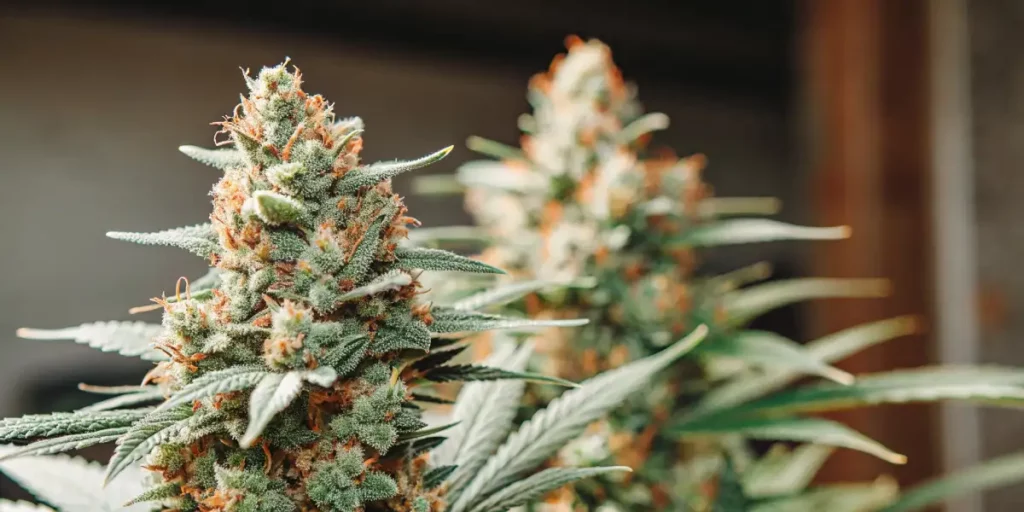
Gator Breath Strain: Indica or Sativa?
Gator Breath Strain is a well-balanced hybrid, combining characteristics of both indica and sativa strains. For those wondering gator breath indica or sativa, this strain offers a unique hybrid balance that delivers both relaxation and uplifting effects.
Indica-dominant traits contribute to a sense of relaxation and body high, making it ideal for evening use or for those seeking relief from physical discomfort. On the other hand, sativa-influenced qualities provide a cerebral and uplifting experience, enhancing mood and creativity.
The balanced nature of Gator Breath Strain means it can be enjoyed throughout the day, offering versatility to users with various preferences and needs.
Advances of Growing Gator Breath Strain Cannabis Seeds
Growing Gator Breath Strain cannabis seeds offers a host of advantages for cultivators:
- Unique Genetics: Gator Breath Strain is the result of careful breeding, combining the genetics of two renowned parent strains. This creates a distinct and exclusive cannabis variety with unique characteristics.
- Broad Appeal: With its balanced hybrid nature, Gator Breath Strain appeals to a wide audience of cannabis enthusiasts. It provides a well-rounded experience that caters to both recreational and medicinal users.
- Flexibility in Cultivation: Gator Breath Strain adapts well to various cultivation methods, including indoor and outdoor setups. Its robust genetics make it suitable for growers of different experience levels.
- High-Quality Buds: When grown under optimal conditions, Gator Breath Strain produces dense, resinous buds with a rich color palette and a complex aroma profile. These high-quality buds are highly sought after by discerning consumers.
- Versatility in Use: The balanced effects of Gator Breath Strain make it suitable for a range of purposes. Whether you’re seeking relaxation, creativity, or relief from discomfort, this strain delivers a versatile experience.
Disadvantages of Growing Gator Breath Str ain Cannabis Seeds
While Gator Breath Strain offers numerous benefits, it’s essential to be aware of potential challenges:
- Specific Growing Conditions: Gator Breath Strain may have specific environmental and nutrient requirements to reach its full potential. It’s crucial to monitor and adjust these conditions accordingly.
- Variable Phenotypes: Due to its hybrid nature, Gator Breath Strain may display some variability in its phenotypes. This means that individual plants may exhibit slightly different characteristics.
- Legal Considerations: Before cultivating Gator Breath Strain, it’s important to be aware of the legal regulations regarding cannabis cultivation in your location. Ensure compliance with local laws and regulations.
- Potential Pest and Disease Susceptibility: While Gator Breath Strain is known for its resilience, it is not immune to pests and diseases. Vigilant monitoring and appropriate pest management strategies are essential.
Overall, with proper care and attention to its specific needs, cultivating Gator Breath Strain cannabis seeds can be a rewarding and fulfilling experience for growers of all levels of expertise. Its unique qualities and balanced effects make it a standout choice in the world of cannabis cultivation.
Remember, for those interested in purchasing Gator Breath Strain seeds, online seed banks like Blimburn Seeds offer a convenient and reliable option. This allows cultivators to access a wide variety of cannabis seeds, including exclusive creations, with the flexibility to order in quantities that suit their specific needs.
FAQS
What is the Gator Breath strain, and what makes it unique?
The Gator Breath strain is a well-balanced hybrid cannabis variety known for its unique aroma, combining earthy, woody, citrus, and spicy notes. It produces dense, resinous buds in a range of colors, from deep green to purple. Its hybrid genetics create a versatile strain suitable for both recreational and medicinal users.
What environmental conditions are ideal for growing Gator Breath Strain?
Gator Breath thrives in a temperate climate, with daytime temperatures between 70-80°F (21-27°C) and cooler nights. For indoor cultivation, high-quality LED or HPS lights are recommended. Outdoors, a sunny location with well-draining soil is best, and additional protection in cooler climates can extend the growing season.
How can I ensure successful germination of Gator Breath seeds?
To ensure successful germination, soak Gator Breath feminized seeds in distilled water or a damp paper towel for 24-48 hours. Then, transfer the seeds to a pre-moistened growing medium. Maintain a temperature between 70-85°F (21-29°C) and a humidity level of 60-70% for optimal conditions.
What are the key steps during the vegetative phase for Gator Breath Strain?
During the vegetative phase, provide 18-20 hours of light daily using LED or HPS grow lights. The plants will benefit from a balanced nutrient regimen, focusing on higher nitrogen levels. Regular watering when the top inch of soil is dry and employing training techniques like low-stress training (LST) can help promote healthy growth.
What is the recommended harvesting time for Gator Breath Strain?
Harvest Gator Breath when the trichomes turn milky white with some amber, signaling peak cannabinoid production. Additionally, check that the pistils have darkened and receded into the calyxes. Typically, Gator Breath has a flowering time of 8-10 weeks, but monitor the trichomes closely to determine the ideal harvest window.

